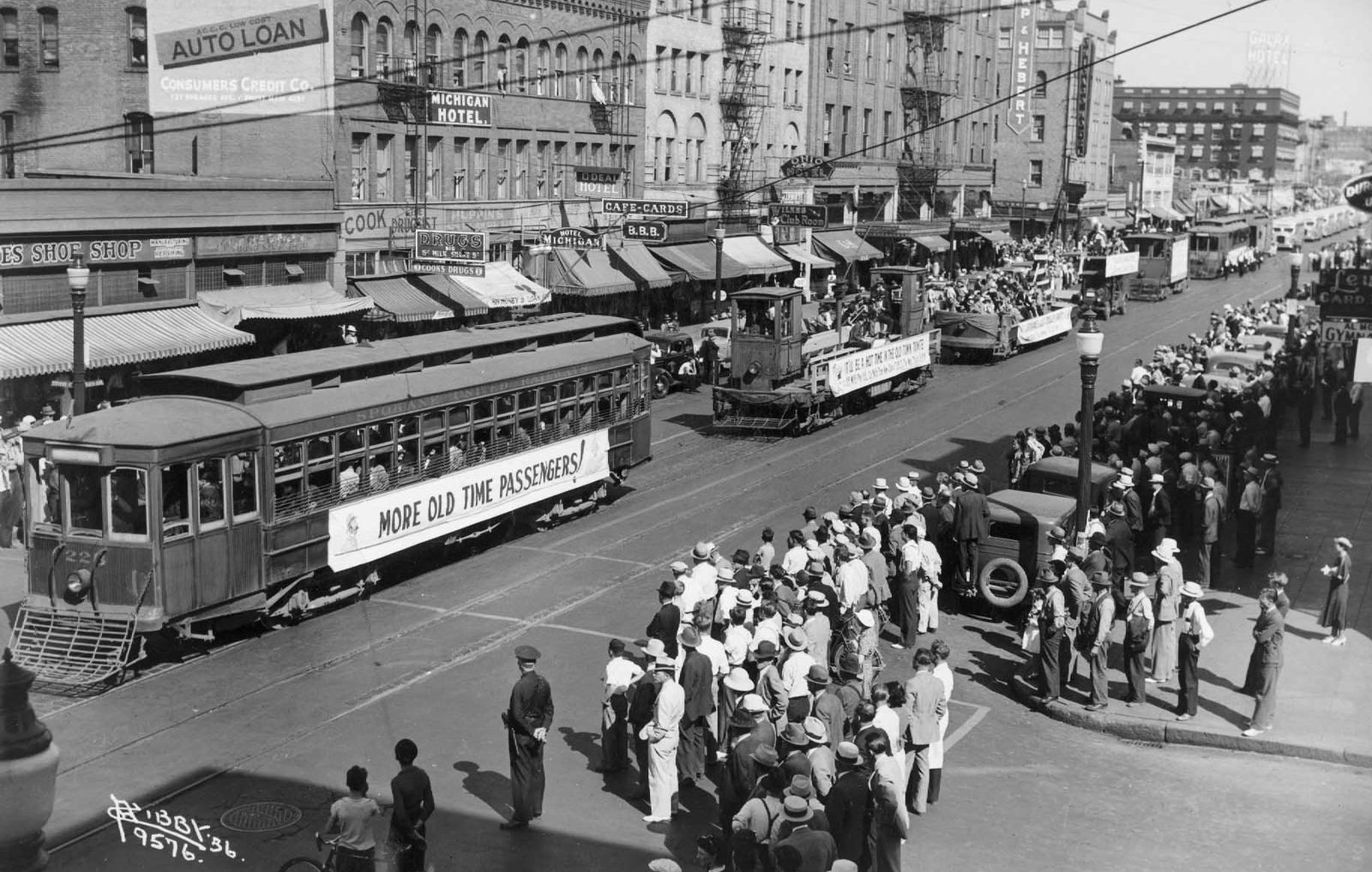
Street cars in Spokane
The street car parade of 1936 marked the end of an era and showed that Spokane held their lumbering street cars in great affection even as the public bus, more versatile and efficient, took over the role of people mover in urban Spokane.
Section:Then & Now
Image One
Photo Archive
| The Spokesman-Review
Image Two
Jesse Tinsley
| The Spokesman-Review
The street car parade of 1936 marked the end of an era and showed that Spokane held their lumbering street cars in great affection even as the public bus, more versatile and efficient, took over the role of people mover in urban Spokane. Since the 1890s, horse-pulled, and later electric, trolleys had trundled along rails laid in the middle of streets and went to pick up workers and housewives from nearby neighborhoods and brought them downtown to work, shop, see a movie, or have a soda. Real estate developers laid rails to new housing areas to entice buyers. Public transit allowed Spokane, the former frontier train stop, to become an urban center, where those without a healthy horse or personal motor car could participate in modern city life. Washington Water Power ran the electric street car system, which spawned Natatorium Park, an amusement center on the Spokane River.

